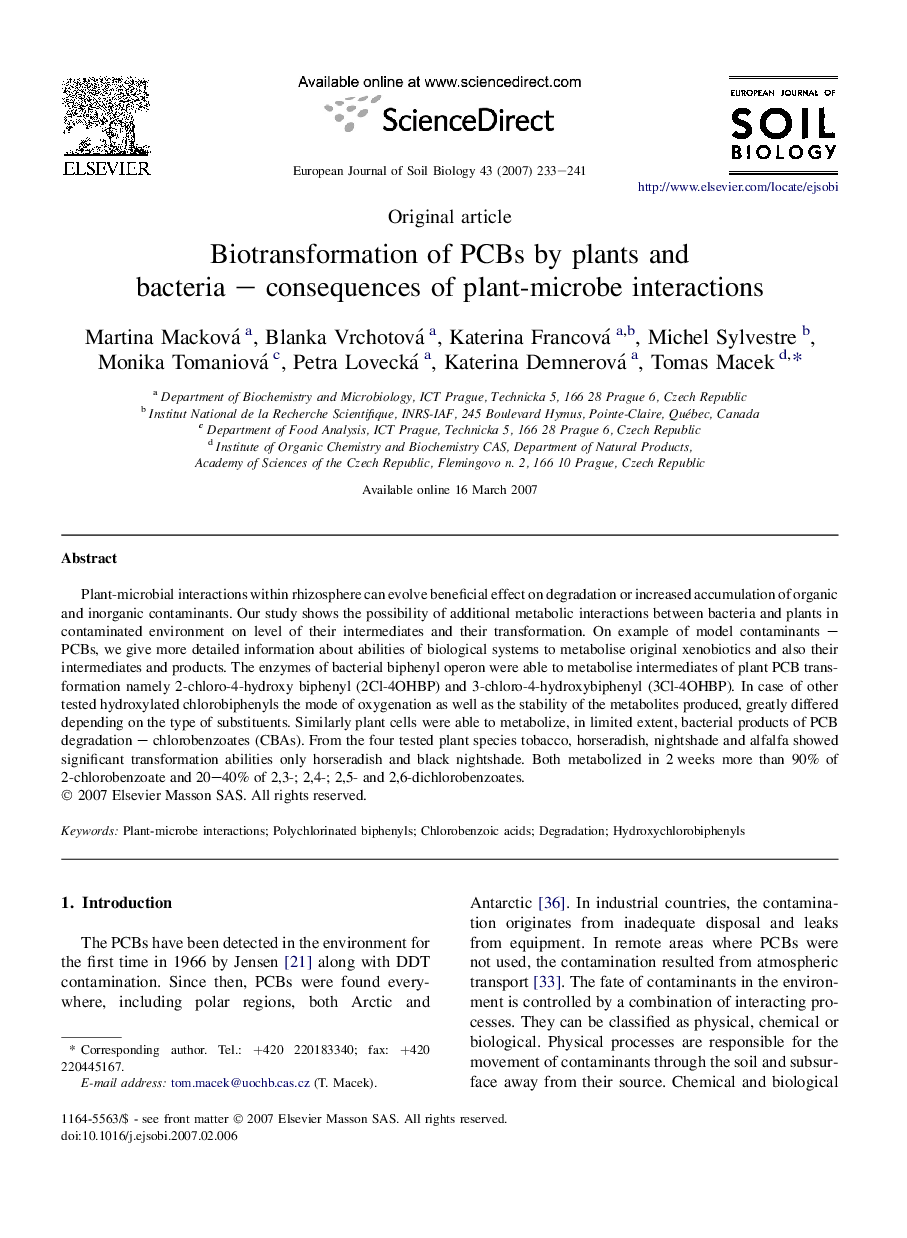| کد مقاله | کد نشریه | سال انتشار | مقاله انگلیسی | نسخه تمام متن |
|---|---|---|---|---|
| 4392498 | 1618167 | 2007 | 9 صفحه PDF | دانلود رایگان |

Plant-microbial interactions within rhizosphere can evolve beneficial effect on degradation or increased accumulation of organic and inorganic contaminants. Our study shows the possibility of additional metabolic interactions between bacteria and plants in contaminated environment on level of their intermediates and their transformation. On example of model contaminants – PCBs, we give more detailed information about abilities of biological systems to metabolise original xenobiotics and also their intermediates and products. The enzymes of bacterial biphenyl operon were able to metabolise intermediates of plant PCB transformation namely 2-chloro-4-hydroxy biphenyl (2Cl-4OHBP) and 3-chloro-4-hydroxybiphenyl (3Cl-4OHBP). In case of other tested hydroxylated chlorobiphenyls the mode of oxygenation as well as the stability of the metabolites produced, greatly differed depending on the type of substituents. Similarly plant cells were able to metabolize, in limited extent, bacterial products of PCB degradation – chlorobenzoates (CBAs). From the four tested plant species tobacco, horseradish, nightshade and alfalfa showed significant transformation abilities only horseradish and black nightshade. Both metabolized in 2 weeks more than 90% of 2-chlorobenzoate and 20–40% of 2,3-; 2,4-; 2,5- and 2,6-dichlorobenzoates.
Journal: European Journal of Soil Biology - Volume 43, Issue 4, July–August 2007, Pages 233–241